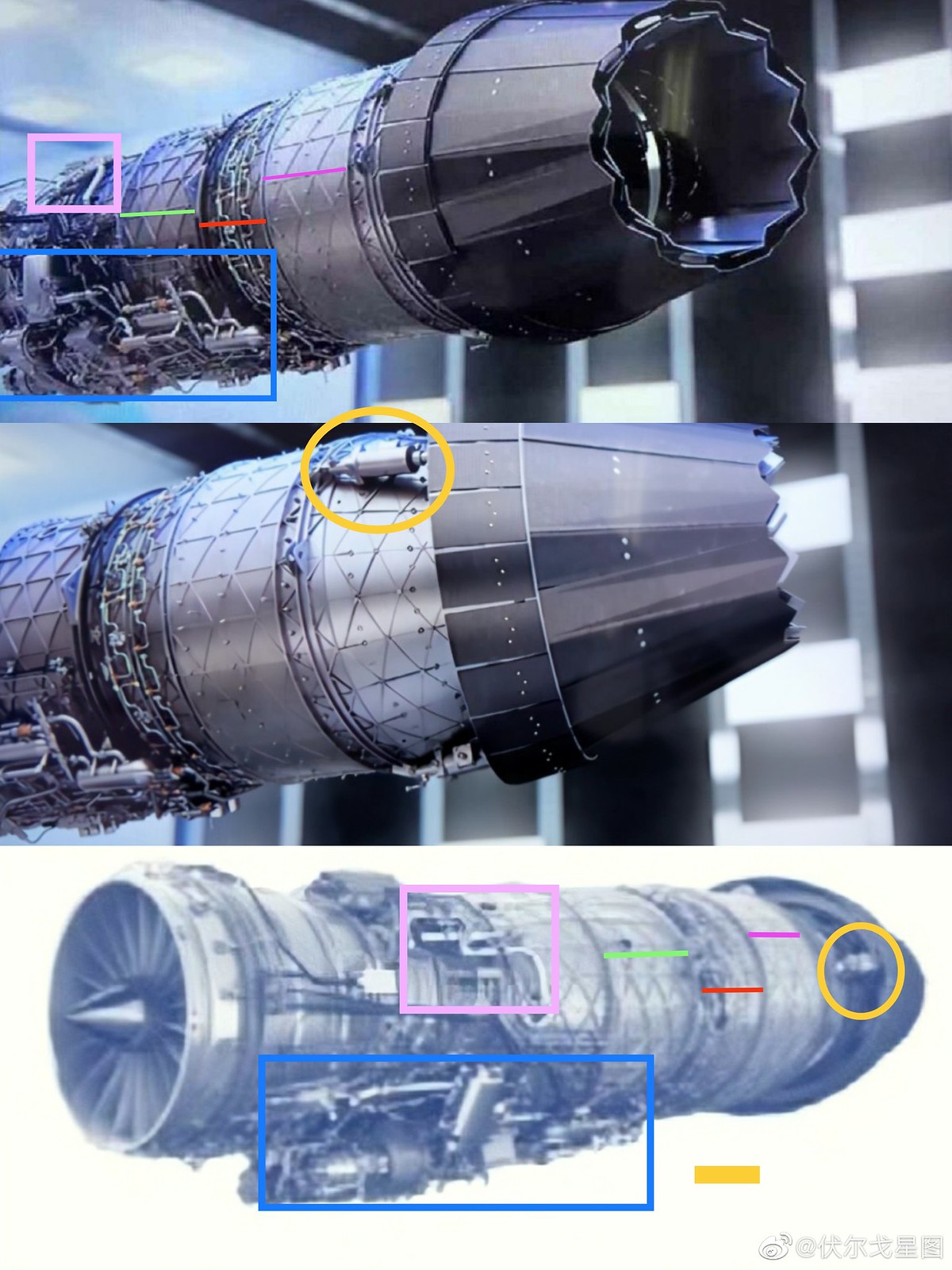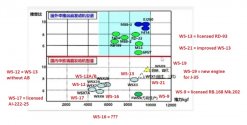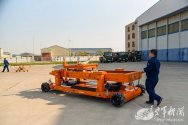I am not going to defend the figure 10, but you can't seriously get any figure by measuring a power point slide.In that case, white triangle has ~9200kgf of thrust with a TWR of ~8,5 while yellow triangle has ~9700 kfg of thrust with a TWR of ~9,5-9,6.
View attachment 106803
You are using an out of date browser. It may not display this or other websites correctly.
You should upgrade or use an alternative browser.
You should upgrade or use an alternative browser.
Chinese Engine Development
- Thread starter jackbh
- Start date
Oh so I was right!WS-19 is all but confirmed to have a 3D-thrust-vectoring variant. In fact, this was unveiled four years ago in the form of a promotional video, but we didn't know at the time that the engine depicted was the WS-19.

lcloo
Major
This is called Mecanum wheels. It can move in any direction with-out turning the chassis of the vehicle/cart, example it can moved like a crab in sideway direction, especially useful in a small restricted space, like directly under the belly or wing of an aircraft.Does anyone know what the bizzare design of the wheels are for?
View attachment 106840
Apparently this is a remote-controlled/self-driving trolley for carrying and holding turbofan engines in place during installation on fighter jet airframes in fighter jet assembly lines?
The mecanum wheel is an wheel design for a land-based to move in any direction. It is sometimes called the Swedish wheel or Ilon wheel after its inventor, Bengt Erland Ilon (1923–2008), who conceived of the concept while working as an with the company Mecanum AB, and it in the on November 13, 1972.
There are large numbers of useful SW packages. One area where China used to be much ahead of others is emulating turbulent flow. It was possibly in 1999 when I happened to meet a Chinese researcher of that area. I joked to him that all kind of approaches have been tried without success in the last 200 years. He said that no, the calculations match very well with measured situations. He was here in Finland as at that time we still had a better supercomputer than China and he needed that. Turbulent flows appear at least near wing tips of airplanes, inside turbine engines and elsewhere. The theory had been invented by one of members of Chinese Academy. I might speculate that some designs for atomic bombs used a rough version of that.tangentially related, but I wonder if chinese companies managed to come up with an indigenous version of the various kinds of aviation design software (aerodynamics software, structural design software, system design software, and assembly software)
iirc the majority, if not all, of these products come from western countries. a report was posted on the forum some time ago that highlighted this vulnerability, identified by chinese scientists themselves (Designing both civilian and military aircraft is impossible without them. Aviation design software is essentially a “skull-squeezing curse” if foreign companies stop providing China with the software, the PRC aviation industry will be “paralyzed - prof. Yao Weixing 姚卫星 of Nanjing University of Aeronautics and Astronautics)
the report mentioned that an indigenous structural fatigue analysis software program has already been developed, but not the rest (2018)
pls factor in the interest over time....time changes expectationYou guys are so greedy now. Just five years ago you'd be content with a domestic engine that works reliably.
SDF 2035: what do you mean Chinese engines couldn't achieve FTL warp speed. Sooooo laaaamee!!You guys are so greedy now. Just five years ago you'd be content with a domestic engine that works reliably.
Huang Weina, the chief engineer of ws-19, gave the data of WS19, the thrust of the engineering prototype is 10 tons, and the thrust-to-weight ratio is 10. At the same time, the thrust of ws-13 is similar to that of RD33.
And confirmed the existence of the legendary 9-ton thrust WS-21.
View attachment 106778
Can anyone help and correct or complement this chart?

Would be neat to have ws-10 family, ws-15, f110 and f-119 in it. I'm clearly greedy...
Would be neat to have ws-10 family, ws-15, f110 and f-119 in it. I'm clearly greedy...
Me too!

